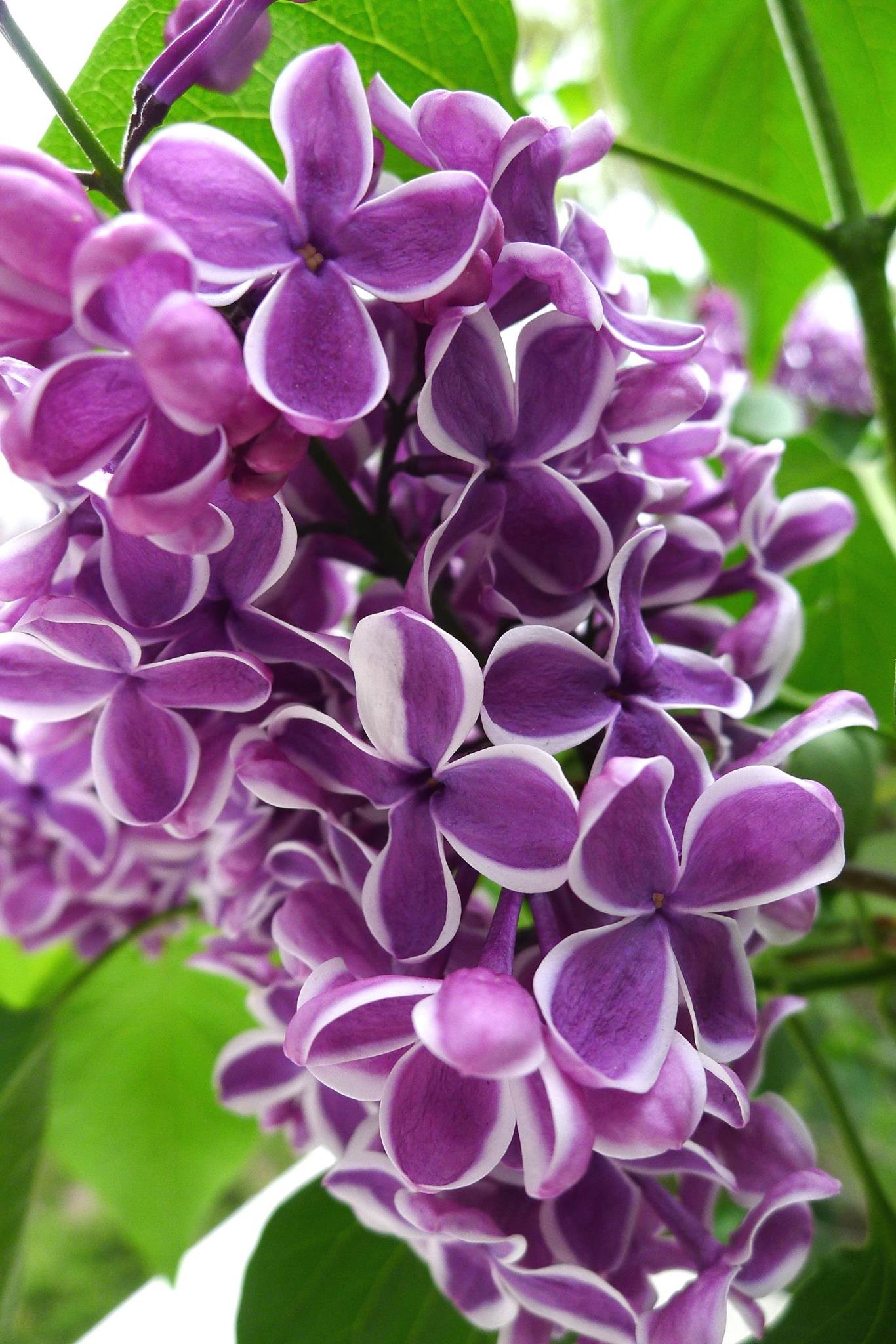
Verigated Lilac
(Syringa spp.)
Photo by Ilana Sobo

Verigated Lilac
(Syringa spp. )
The Enchanting Beauty of Lilacs
A Fragrant Symbol of Spring
Lilacs, with their intoxicating fragrance and cascading clusters of blossoms, have long been revered as heralds of spring. Their delicate yet vibrant blooms fill the air with a heady perfume, evoking nostalgia, love, and renewal. The Syringa genus, part of the Oleaceae (olive) family, comprises over 20 species of deciduous shrubs and small trees. The name "lilac" originates from the Persian word lilak, meaning "bluish," a nod to the classic violet hue of many varieties.
History and Origins
Lilacs are native to Eastern Europe and Asia, where they have flourished for centuries. They were first cultivated by the Ottoman Empire before being introduced to Europe in the 16th century. French horticulturist Victor Lemoine played a pivotal role in developing the many exquisite hybrid varieties still beloved today, known collectively as "French lilacs." By the 18th century, lilacs had spread to North America, becoming a staple in colonial gardens and a favorite of figures like Thomas Jefferson and George Washington.
Varieties and Characteristics
There are numerous species and cultivars of lilacs, each possessing its own charm:
Common lilac (Syringa vulgaris) – The most well-known variety, offering large, fragrant panicles in shades of purple, pink, white, and blue.
Persian lilac (Syringa persica) – A more delicate variety with finely textured leaves and graceful, pale lavender blooms.
Korean lilac (Syringa meyeri ‘Palibin’) – A compact, highly fragrant shrub that thrives in smaller gardens.
Japanese tree lilac (Syringa reticulata) – A striking tree form that produces creamy-white flowers and adds architectural interest to landscapes.
Miss Kim lilac (Syringa patula ‘Miss Kim’) – A late-blooming, cold-hardy variety known for its deep lavender flowers and autumnal red-tinged foliage.
The Value of Lilacs in the Garden
Lilacs hold immense value in ornamental landscapes. Their sweetly scented blooms attract pollinators such as bees, butterflies, and hummingbirds, making them an ecological asset. These hardy shrubs provide structure and privacy when used as hedges while also serving as magnificent standalone specimens. Their longevity is another remarkable trait—many lilacs live for decades, with some heirloom varieties thriving for over a century.
How to Care for Lilacs
Caring for lilacs is relatively simple, making them a favorite among gardeners:
Sunlight: Lilacs require at least six hours of direct sunlight daily to ensure prolific blooming.
Soil: They prefer well-drained, slightly alkaline soil enriched with organic matter.
Watering: While relatively drought-tolerant, lilacs benefit from occasional deep watering, especially in dry conditions.
Pruning: Proper pruning is essential to maintain health and flower production. Deadheading spent blooms and thinning older branches encourage vigorous growth.
Fertilization: A balanced fertilizer with low nitrogen content in early spring supports abundant flowering.
Cultural and Symbolic Significance
Lilacs have long been associated with deep emotional and cultural meanings. In the Victorian language of flowers, they symbolize first love and the innocence of youth. In other traditions, lilacs represent wisdom, spiritual awakening, and even protection against evil. Their brief yet breathtaking bloom serves as a poignant reminder of life’s fleeting beauty, urging us to savor moments of joy and fragrance.
References
Dirr, M. A. (2009). Dirr's Encyclopedia of Trees and Shrubs. Timber Press.
Ferguson, P. (2019). Lilacs: A Gardener’s Encyclopedia. Timber Press.
U.S. National Arboretum. (2008). Lilac Cultivars and Their Care. USDA Publication.
Wilson, E. H. (1923). Aristocrats of the Garden. The Stratford Company.
Young, J. (2016). The Heirloom Gardener’s Guide to Lilacs. Garden Press.
In addition to its culinary and medicinal applications, anise hyssop has a wonderful gift of attracting pollinators, particularly bees and butterflies, making it an important plant in biodiverse gardens. Its presence in traditional gardens was not only for practical use but also to invoke spiritual protection and to uplift the heart. Anise hyssop’s aromatic qualities make it a natural fit in any herbal garden, where it can be grown both for its beauty and its versatile uses in teas, remedies, and even as a flavoring for food. With its calming qualities, anise hyssop serves as a bridge between the physical and spiritual, offering both wellness and wisdom.
Anise hyssop (Agastache foeniculum) thrives in well-drained soil and prefers full sun, although it can tolerate some light shade. It is a hardy perennial, growing best in USDA zones 4-9, and can reach heights of 2-4 feet. It’s relatively low-maintenance, needing only occasional watering once established, as it’s drought-tolerant once its roots are deep. To grow it, plant seeds in the spring after the last frost or start indoors 6-8 weeks prior. It benefits from regular deadheading to encourage continuous blooming, and it’s best to cut it back in the fall to prevent disease and promote healthy growth the following year. Anise hyssop also attracts pollinators like bees and butterflies, making it a wonderful addition to any herb or pollinator garden.
References:
Moerman, D. E. (1998). Native American Ethnobotany. Timber Press.
Griffiths, B. (2006). Herbal Medicine of the American Southwest: A Guide to Understanding, Identifying, and Using the Plants. The University of Arizona Press.
U.S. National Library of Medicine, National Institutes of Health. (2018). "Anise Hyssop: A Natural Medicine for Multiple Conditions." PubMed.

